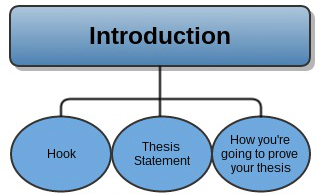Whether you are writing an essay for English class or an exam, you want to start off your introduction powerfully and skillfully. The best news– you don’t have to be an awesome writer to do it. By using one of these three techniques correctly, you can start your paper off in a way that demands attention, displays your knowledge, and makes you look really good.
An introduction paragraph serves as the gateway to your essay. It’s going to show the evaluator that you understand what you’re expected to do and present a general idea of where your essay is going to go. Ideally, it should also briefly mention the examples you are going to use. So to start your introduction, here are three useful techniques that you can use.
For demonstration purposes, let’s use this essay prompt: Cats and dogs are popular household pets across America. Write an essay in which you take a position on which animal makes a better pet, and explain why you made that choice using examples to support your answer.
1. Open with a question.
Starting your introduction with a question targeted to the essay topic is a great way to start an essay. Rhetorical questions can be an effective technique for drawing in the reader. You need to make sure, however, that the questions are focused, relevant, and work with the essay prompt you are responding to.
You don’t want your question to be too vague. Instead, you want it to reflect the essay topic as closely as you can. Examples for our paper prompt include:
- Is the cute and cuddly cat you saw at the pet store really going to be a better pet than the playful puppy at the pound?
- Both cats and dogs can give you love, but is one a better lifetime companion than the other?
- While cats and dogs both make great pets, is one better than the other?
All three of these questions start this essay off in a way that captures the reader’s attention, draws them in, and is focused specifically on the prompt.
2. Use a quote to Write
When you choose this option, you need to exercise a little caution. Used correctly, it’s highly effective. Used incorrectly and it could backfire.
If you are going to use a quote from a famous person, make sure you have (1) the quote correct and (2) the author/speaker correct. This is a way to use that correctly:
Pam Brown once said, “One small cat changes coming home to an empty house to coming home.”
Another option is to use a common phrase or idiom. These can be cited as such and can save you from the potential landmine of saying something like, Abraham Lincoln once said, “The Internet is a place for fools.” Here are some examples of how to use common sayings correctly:
- “Dogs are a man’s best friend,” is a saying that has been tossed around for years, but is it true?
- While the saying goes that “curiosity killed the cat,” many people have nearly been killed by the antics of their pet cats.
- Many people will tell you that their house has “gone to the dogs,” but that isn’t always a bad thing.
All three of these examples use sayings we toss around on a daily basis, and they don’t necessitate citing an author by name. They’re a safe bet if you can call a relevant one readily to mind.
3. Start with a fact or statistic.
This technique can work really well for essays based on passages that are right in front of you, but it can also work for general ones like the one we are using. Write your essay with a fact or statistic, you present immediate, undebatable information. It’s sharp, deliberate, and displays knowledge on the subject right up front. With that being said, the fact or statistic you provide doesn’t have to be a hard and fast number like “75%.” It can be something that we all know to be true. The statistic works only if you have ion confidence in what you are using, preferably in front of you in the passage.
Here are three examples that would work well for “facts”:
- Cats and dogs are considered popular pets in American households, but some people are better suited for one rather than the other.
- Cats and dogs have been trusted companions to people for hundreds of years.
- While cats and dogs can both make great pets, cats work better for many.
In all three examples, a fact is stated. Notice that no exact numbers were used, nor do they have to be. The fact just has to be an indisputable fact. Each of these examples starts the introduction and the third one even doubles as a thesis statement.
Whether you begin your essay with a question, quote, fact, or statistic, you are using effective and advanced techniques to get your paper on track to an “A”. Try them out, memorize “QQFS,” and whip them out in case of emergency. They just might boost or even save your grade.
